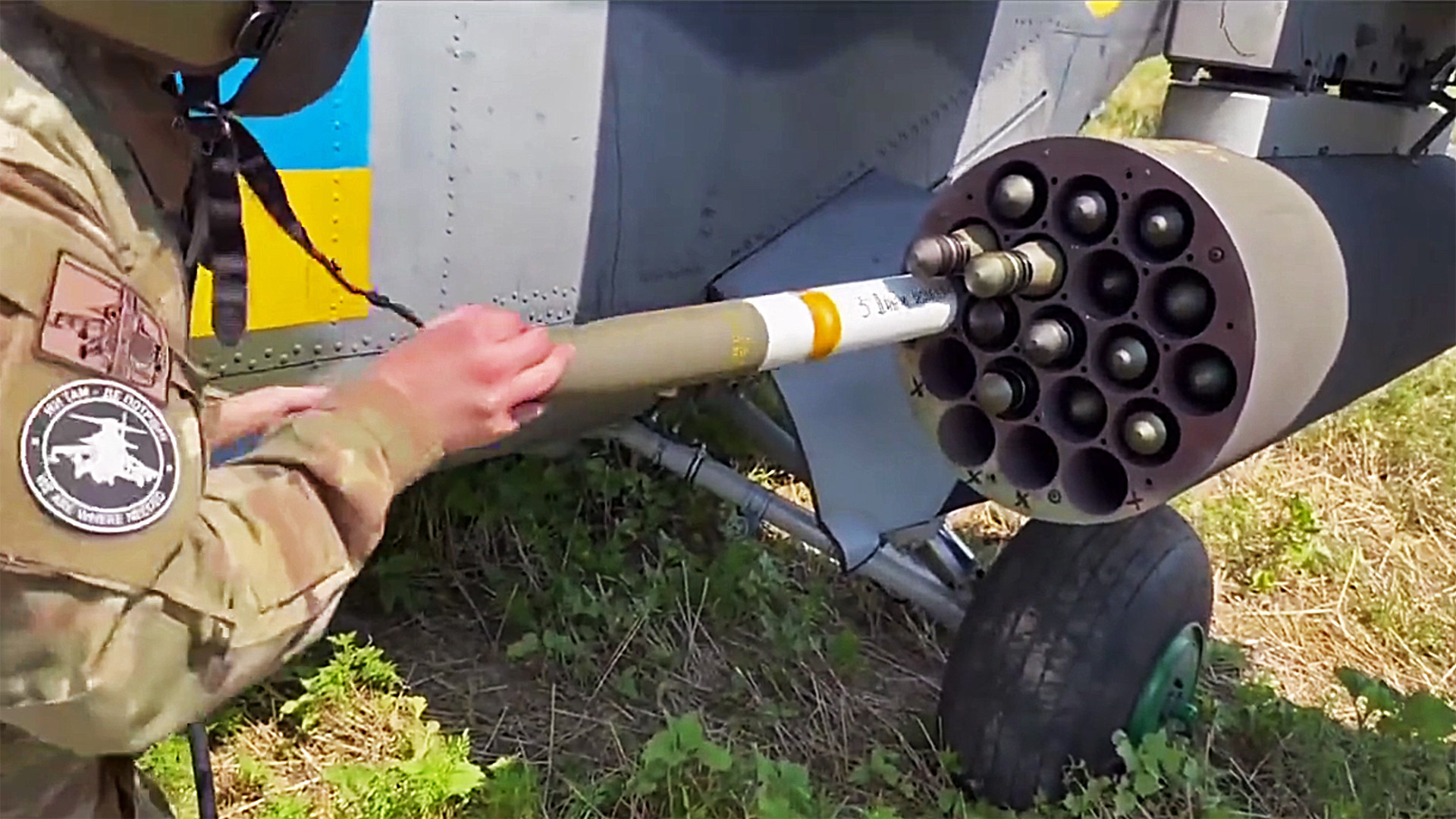At least some of Ukraine’s Mi-24 Hind gunship helicopters now appear to be capable of firing U.S.-made unguided 70mm Hydra rockets. The U.S. government first publicly announced it was sending thousands of these munitions to Ukraine earlier this year.
A video, seen below, has now emerged showing what looks to be one of the Mi-24V Hinds that the Czech Republic previously donated to Ukraine being armed with Hydras. The rockets are seen being loaded into a 19-tube M261 rocket pod, which is attached to a pylon on the Hind’s left-side stub wing via an adapter.
Beyond the pylon adapter, it is not immediately clear what other modifications were required to integrate the Hydra onto the Hind. Whether or not other Ukrainian platforms, such as the country’s Mi-8/Mi-17 Hip armed transport helicopters, are also now able to employ them is not currently known.

The Hydra is a modular munition consisting of a standardized 70mm rocket motor onto which various warheads can be attached. The rockets seen in the Ukrainian Hind arming video look to be typical unguided types with high-explosive warheads. A variety of other warheads, including anti-armor ones and anti-personnel types loaded with thousands of metal darts called flechettes, are also available, buts unclear which ones Ukraine’s forces may have received. Official Pentagon data only says that “over 7,000 Hydra-70 aircraft rockets” had been included in aid packages for Ukraine as of July 7.

The M261 rocket pod, a lightweight type designed primarily for use on armed helicopters, is also capable of firing laser-guided 70mm Advanced Precision Kill Weapon System II (APKWS II) rockets. APKWS II, a munition Ukraine has also received, consists of a guidance section that slots in between the warhead and the rocket motor. This allows for the transformation of any unguided Hydra type into a low-cost precision-guided munition. However, there’s no indication at present that Ukraine’s Hinds are employing APKWS II rockets.

As the conflict in the country has ground on, Ukraine’s Hinds, as well as Mi-8/Mi-17 Hip armed transport helicopters, have generally been observed firing volleys of unguided rockets indirectly at Russian positions. Ukrainian Su-25 Frogfoot ground attack jets have been employing more or less the same tactics, including now in strikes using U.S.-supplied unguided five-inch Zuni rockets, as you can read more about here.
Russian armed helicopters have also been observed doing the same, which offer questionable results in terms of accuracy, but are intended to help reduce the launching aircraft’s vulnerability to enemy air defenses.

For the Ukrainian military, Russia’s air defenses have been a serious threat for the entire duration of the conflict to date. However, they have become an even more pronounced concern since Ukraine began its major counter-offensive in June. This has required advancing into areas where Russian forces are protected by more extensive defenses and can more readily call for their own air and artillery strikes.
In addition, as with the U.S. transfer of stocks of Zunis, the delivery of thousands of Hydras to Ukraine is also a reflection of dwindling stockpiles of comparable Soviet-designed unguided aircraft rockets in the country. Those stocks are likely to be even more strained now with the additional demands of the counter-offensive.
The integration of Hydra rockets onto Ukraine’s Hinds is also just the latest example of Western aerial munitions being added to the arsenals of the country’s Soviet-designed fixed-wing aircraft and helicopters. Various Ukrainian combat jets are now capable of employing a variety of Western missiles, including radar-busting AGM-88 High-speed Anti-Radiation Missiles (HARM) from the United States and British-supplied stealthy Storm Shadow land-attack cruise missiles, as well as Joint Direct Attack Munition-Extended Range (JDAM-ER) precision-guided bombs.
If past trends are any indication, now that a video of a Hydra-armed Hind has emerged, we will likely be seen more of this particular combination, and possibly of these rockets on other platforms, in the near future.
Contact the author: joe@thedrive.com

